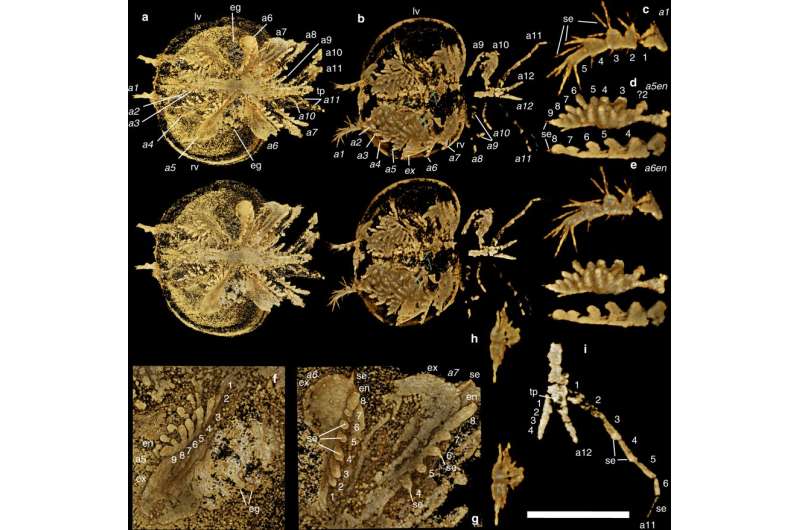X-ray analysis reveals amazing 3-D soft anatomy of animals that lived 500 million years ago

An international team led by scientists from the University of Leicester and Yunnan University in China has revealed unprecedented anatomical detail from fossil animals that lived 500 million years ago.
The team used X-ray analysis to penetrate rocks, revealing ancient bodies, eyes, legs, and even the hairs on the legs of the animals.
In one case, the X-ray analysis even revealed an animal brooding a clutch of eggs, suggesting that males and females can also be discerned.
The fossils are from near the town of Chengjiang in Yunnan Province, South China, and were preserved in sedimentary rocks of an ancient shallow sea.
Dr. Tom Harvey from the University of Leicester said:
"The animals are arthropods, relatives of crabs and lobsters, with a segmented body. They look almost as though they were living a few moments ago."
Dr. Dayou Zhai, lead author of the study at Yunnan University, said:
"We could see the tips of legs sticking out from below the animal's hard exterior shell on the rock surface, but it was only with the X-ray analysis that we were able to peer inside the shell and find amazing soft-anatomy preserved."
Prof Yu Liu, leader of the Chinese laboratory, said:
"These fossils are of profound importance for our understanding of early animal evolution, but rarely do we see this resolution of 3-dimensional detail preserved."
More information: Dayou Zhai et al. Variation in appendages in early Cambrian bradoriids reveals a wide range of body plans in stem-euarthropods, Communications Biology (2019). DOI: 10.1038/s42003-019-0573-5. Open Access: www.nature.com/articles/s42003-019-0573-5
Journal information: Communications Biology
Provided by University of Leicester




















